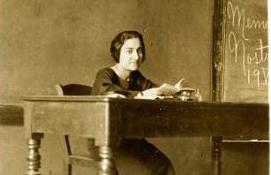This week, I examined three models of learning: learning styles, multiple intelligences, and accelerated learning. (Here's another great site on multiple intelligences theory, with a brief and excellent quiz.)
I've long been a fan of multiple intelligences theory, and I've found that students respond well to a classroom discussion of it. It's helpful for them to see that there are many forms of intelligence besides the traditionally valued ones, and that not everyone learns best by reading and writing, even though schools have historically been set up to favor this way of learning.
I fess up to my students (as if they haven't already guessed, since I'm their English teacher) that I do learn best by reading and writing, and that I love this stuff - hence, I teach it. We talk about all the forms of intelligence - verbal-linguistic, visual-spatial, bodily-kinesthetic, interpersonal, intrapersonal, naturalistic, musical, and mathematical-logical - and how they are all valuable. I have them take the online quiz at the great site I mentioned above. . . They print out their results in a colorful pie chart. I post signs listing the different forms of intelligence and we move around the room to illustrate what our strongest and least used forms are. It's an interesting visual/kinesthetic exercise and generates some good discussion!
I had not heard before of the ninth intelligence that Howard Gardner added to the list - existential intelligence. I'm definitely going to bring this one up to students in the future. I want to know who in the classroom is on a quest to determine the meaning of life. (Aren't we all?)
In my Applied Comm classes, I am typically alone in the verbal-linguistic corner when we go to the sign with our strongest form, with students grouped in visual-spatial and bodily-kinesthetic, and I'm alone in the visual-spatial corner for the "least used" part of the exercise, with many students in verbal-linguistic. They can see how they'd be the ones teaching me in their auto tech, welding, and industrial maintenance program classrooms.
Accelerated learning is a new learning model to me, and I'm glad I got a chance to read about it this week. I'm excited to try some of the suggestions in my classroom. There are a lot of dynamic ideas for how to shake up group activities and incorporate review of course material. These approaches will be especially helpful in Oral/Interpersonal Communication, and I want to find meaningful ways to use them in Intro to College Writing as well.
Tuesday, February 16, 2010
Subscribe to:
Post Comments (Atom)

How great is it that you identify areas that your students could teach and you would be the learner. It puts things in perspective.
ReplyDelete